Context
What is Work From Here (WFH)?
WFH partners with local restaurants/breweries during the business workday to offer dedicated coworking space for remote workers at a low cost ($5/day)
- Website: https://workfromhere.space/
- Instagram: https://www.instagram.com/wfh_columbus/
- 3 founders: Garet Camella (my main point of contact), Anne Deis, and Navi Kang
The gig
- Act as a non-biased, third-party interview facilitator
- Minimize bias in interview questions drafted by the WFH team
- open-ended, phrased neutrally
- Contact potential interviewees and schedule interview sessions
- Facilitate 6-10 virtual interviews (15-20 min each) with potential WFH customers to uncover feedback regarding WFH’s value proposition
- Is their business model working? How can it be improved?
- Tools used: Google Suite, Figjam, Calendly, Zoom
- Timeline: April 28, 2023 – May 17, 2023
- Note: I was only asked to facilitate interviews (not analyze/synthesize findings)

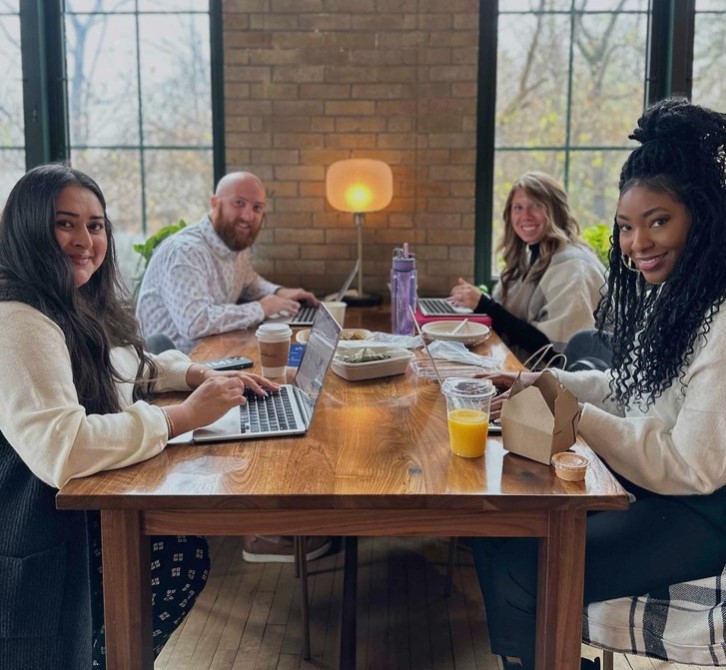
Testimonials: how did it go?
“Samantha was integral to our small business team! She gathered information, created questions, and conducted research-based customer interviews in a short amount of time. She was thorough in her organization and delivery. Watching the interviews was so exciting, and our team was just so impressed with Samantha’s work. She was such a pleasure to work with and we are definitely seeking her skills again!” – Anne Deis
“First, Samantha helped refine our interview questions by removing any bias and aligning them with best practices for collecting user feedback. Then, she reached out to our potential interview participants with perfectly-worded emails and created an efficient system to schedule with folks who were interested—I’m talking a spreadsheet with toggles for interview/participant status (so helpful). Then she facilitated 6 virtual interviews (15-20 min each) with the goal of uncovering feedback about our value proposition and product-market fit. Samantha conducted all of this like she had done it a hundred times before—confidently, efficiently, and smoothly. I was really impressed by her ability to go with the flow of each interview and steer conversations back to our key learning goals.
…having people on your team who are detail oriented self-starters is crucial—and Samantha fits that description perfectly. It was so helpful to truly rely on her to own the research portion of our project. I highly recommend Samantha for any design-thinking and UX-related project and hope to work with her again very soon.”
Minimizing Bias
WFH created a FigJam file where we collaborated to align interview questions with best practices for collecting user feedback (open-ended, phrased neutrally).
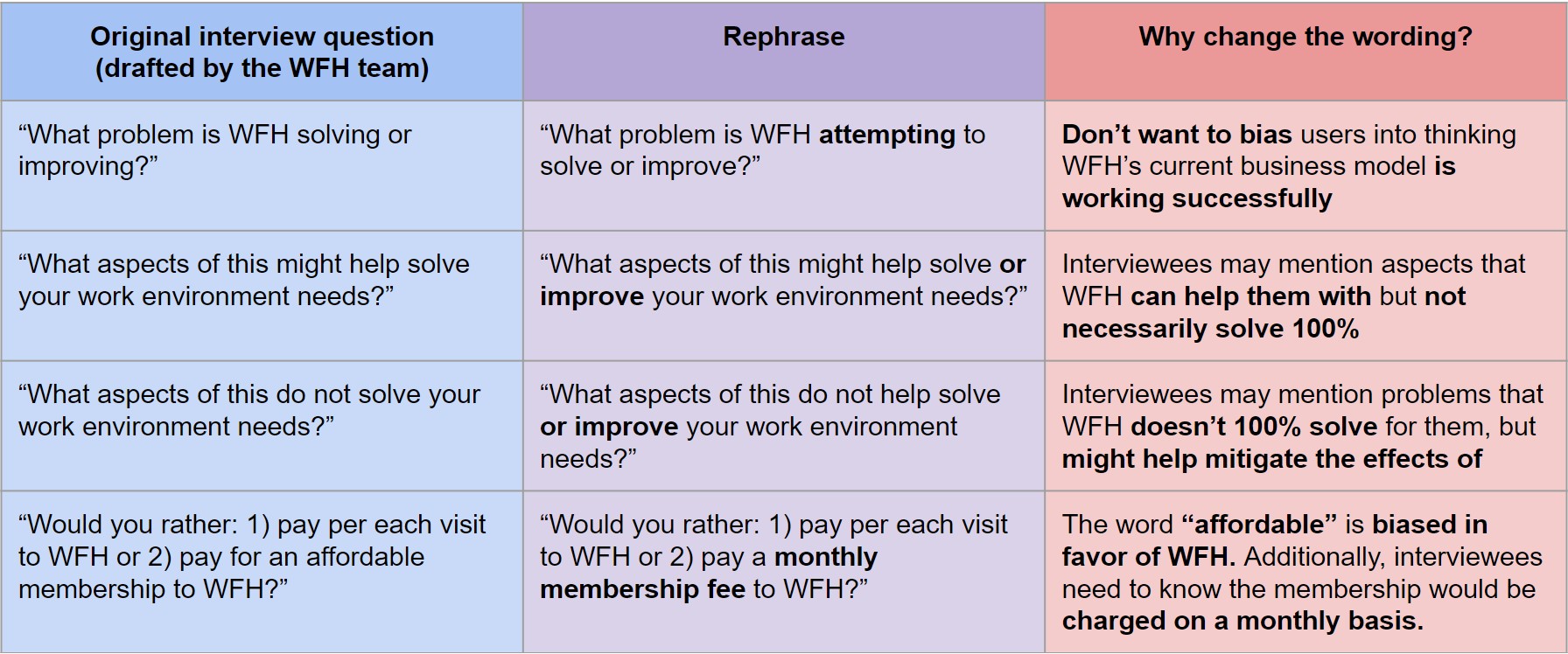
Narrowing the funnel
The WFH team conducted a screener survey.
The next step was to set parameters for potential interviewees:
- Must live in Columbus, OH
- Indicated interest on the survey in participating in a follow-up video interview
- Unbiased about WFH (i.e., did not know the co-founders personally)

Coordinating with interviewees
- I sent an initial email to the 16 potential interviewees
- WFH was NOT mentioned by name (to prevent bias)
- “I am conducting this interview on behalf of a local startup that aims to offer affordable working environment solutions to remote workers. Your feedback in the interview will help them learn how remote workers feel about the startup’s current offerings.”
- An incentive of a $10 voucher for WFH was offered to all interview participants
- If I hadn’t heard back within 3-4 days, I sent a follow-up email
- 6 participants signed up
- Interviews were scheduled using Calendly and conducted via Zoom
- Participant statuses were tracked via Google Sheets
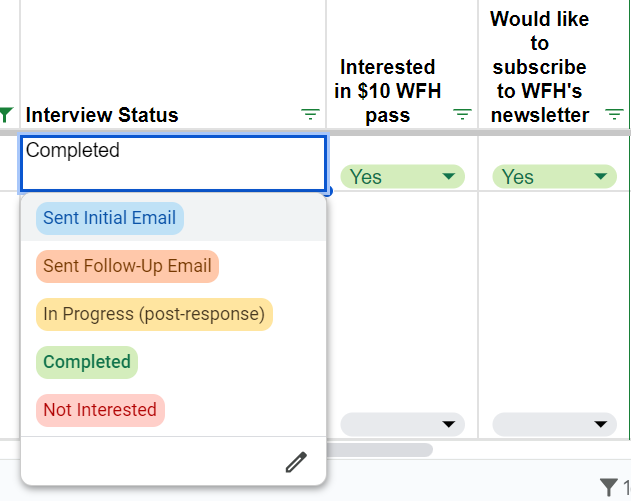
Interview script
I created an interview script to keep interviews consistent
- Introduction
- “This is not formal by any means, so please be as open and blunt as you want to be. This isn’t a test – there are no “right” or “wrong” answers, and you can’t hurt my feelings – I am a neutral, third party here. This company truly wants feedback – positive or constructive – so they can learn and
iterate.” - Asked participants if they consented to be recorded during the interviews for internal research analysis purposes
- “This is not formal by any means, so please be as open and blunt as you want to be. This isn’t a test – there are no “right” or “wrong” answers, and you can’t hurt my feelings – I am a neutral, third party here. This company truly wants feedback – positive or constructive – so they can learn and
- Interview questions
- Included asking if they were interested in the $10 voucher (incentive) and if they’d be willing to subscribe to WFH’s email newsletter (call to action/CTA)
- Conclusion/Thank You
Before each interview, I reviewed the participant’s responses to the screener survey.
Interview participant demographics
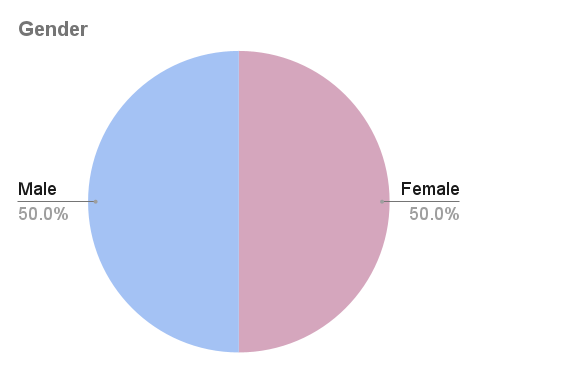
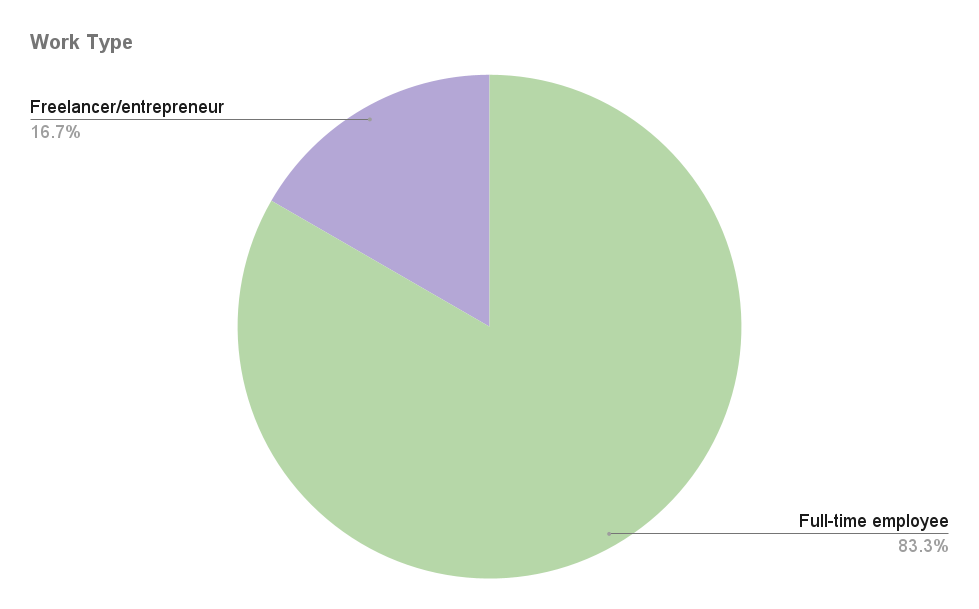
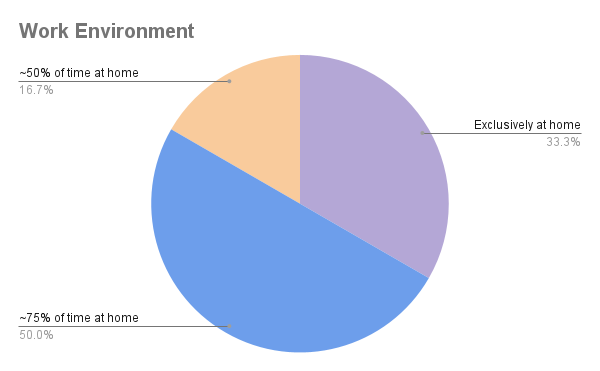
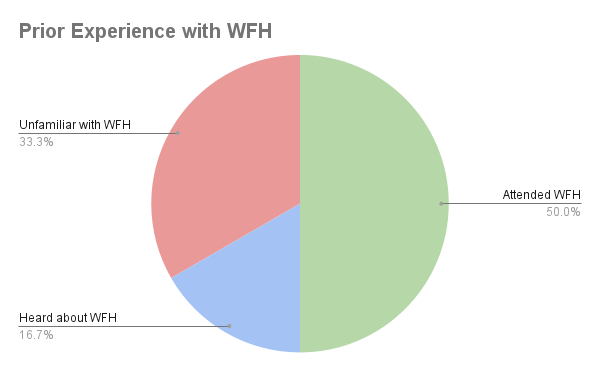
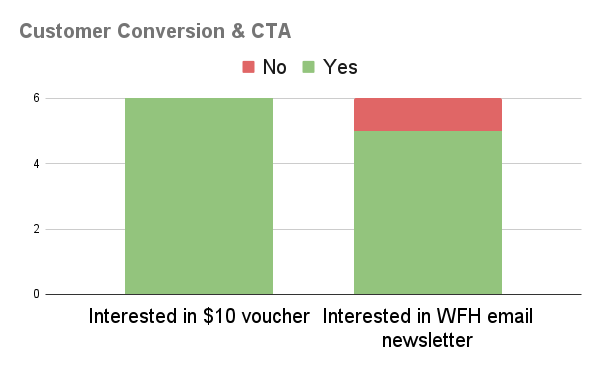
Room for improvement
- Our target demographic was people who were unfamiliar with WFH – I was surprised that 2/3rds of participants had already heard of or attended WFH. We still got valuable feedback from those interviewees, but perhaps this shows that the participant pool was skewed, as the screener survey had largely been distributed among the 3 co-founders’ networks.
- Solution: Widely distribute screener survey in public channels rather than co-founders’ networks
- There was a 9-day gap between the launch of the screener survey and the initial email to the potential interviewees. I believe the time lag contributed to our low interview participant rate (6 out of 16 eligible survey respondents).
- Solution: Embed the Calendly scheduler directly into the screener survey so participants can immediately schedule their interview
That's a wrap!
My part of the project lasted 2.5 weeks. It was fun to push into a project with a specific task and goal in mind!
If you’d like to see more of my work or get in touch, you can find me on LinkedIn. Thanks for your time!
-Samantha Gross